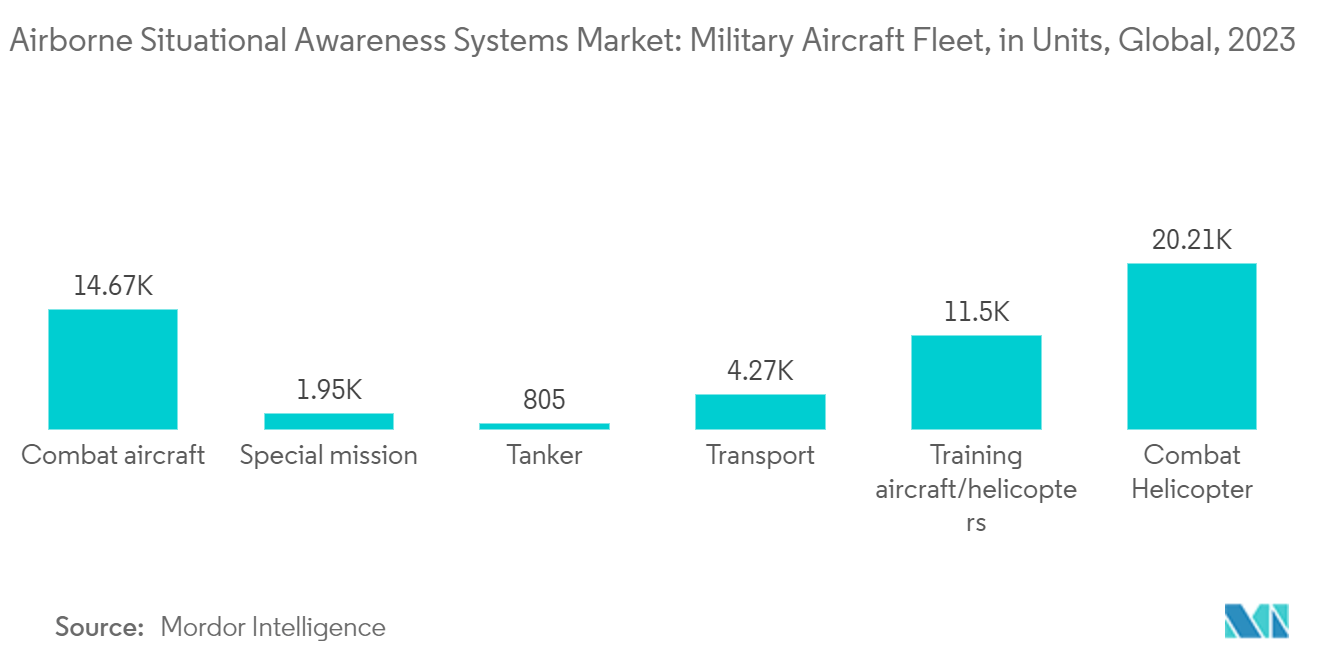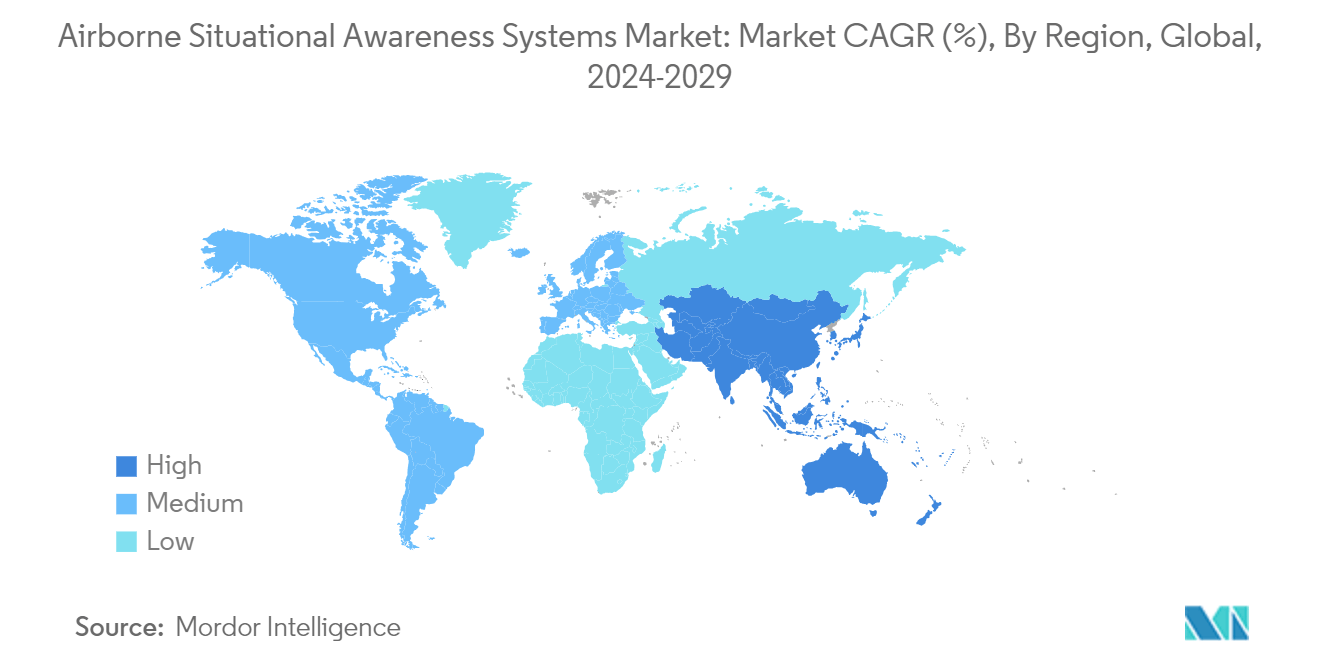Market Trends of Airborne Situational Awareness Systems Industry
Sensor Segment to Exhibit Highest Growth Rate During the Forecast Period
The increasing need for electronic warfare equipment and systems and extensive surveillance and reconnaissance capabilities is driving the expansion of sensor-based radar and imaging systems. The heightened adoption of advanced MANPADS and ground-based air defense systems amplifies risks for airborne assets. Consequently, there's a rising demand for situational awareness systems on drones, fighter jets, and transport aircraft. In October 2023, Shield AI, a leading American defense tech firm specializing in AI pilot technology, secured a long-term agreement (LTA) with Sentient Vision, an Australian AI technology company. This partnership aims to roll out a next-gen wide area motion image (WAMI) solution. Under this LTA, Shield AI will supply Sentient's ViDAR solution on unmanned aerial vehicles (UAVs), with the inaugural deliveries slated for 2024.
Highlighting the innovation trend, in June 2023, BAE Systems’ Electronic Combat Systems (ECS) division unveiled a new export-focused airborne digital electronic warfare (EW) defense system. Dubbed 'Storm EW'. This system is modular, scalable, fully internal, and platform-agnostic. Operating across the entire spectrum, Storm EW supports third-party software and programmability. While its primary application targets the expansive global F-16 fleet, its versatility extends to safeguarding larger aircraft, including transports and tankers.
Continuing this trajectory, in August 2024, the US Air Force inked a USD 1 billion deal with RTX's Raytheon business unit for F-22 sensor upgrades, set for completion by 2029. The upgrade plan encompasses all 154 F-22 Raptors, integrating features like new cryptography, an expanded open architecture, advanced weapons, an infrared search and track sensor, and the Project Keystone initiative for an advanced threat warning receiver. Such strategic investments in cutting-edge sensor technology are poised to drive the market's growth during the forecast period.

Asia-Pacific to Witness Highest Growth During the Forecast Period
Countries aiming to assert control over their airspace recognize the critical importance of airborne situational awareness. In the Asia-Pacific, nations like China, India, Australia, Japan, and South Korea ramp up investments in naval situational awareness systems, enhancing their maritime battle readiness.
Amid rising geopolitical tensions and breaches of maritime and aerial borders, countries in the Asia-Pacific, including China, India, South Korea, and Japan, are boosting military spending. They focus on next-gen military fighters with cutting-edge electronic warfare and situational awareness features. Emphasizing local production, state-owned enterprises craft aircraft with these advanced systems for their armed forces. For example, in August 2023, Japan awarded Northrop Grumman Corporation a contract worth USD 1.38 billion for five additional AHE (Airborne Early Warning and Control) E-2D (Advanced Hawkeye) aircraft.
In a similar move, in September 2024, the Indian Ministry of Defence (MoD) released a Request for Proposal (RFP) for six AEW&C systems. This move aims to bolster the Indian Air Force's (IAF) air defense capabilities. The IAF seeks jet-engine aircraft with a minimum of eight hours of endurance, air-to-air refueling, and high operational altitude. Furthermore, in October 2022, Bharat Electronics inked a licensing agreement with CASDIC, DRDO, for technology transfer of digital radar warning receivers (DRWR). This advanced system, boasting high sensitivity and accurate parameter measurement, promises enhanced situational awareness even in dense signal environments. Such developments and acquisitions are set to drive the growth of the market in the region during the forecast period.


